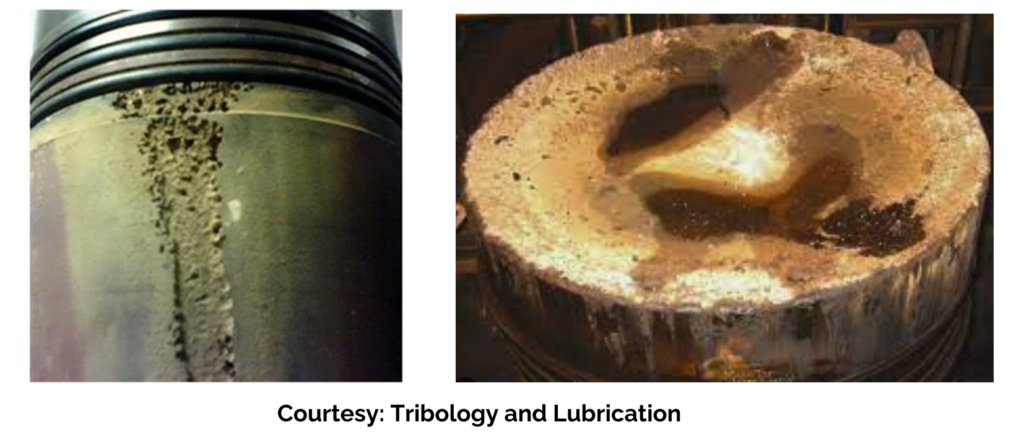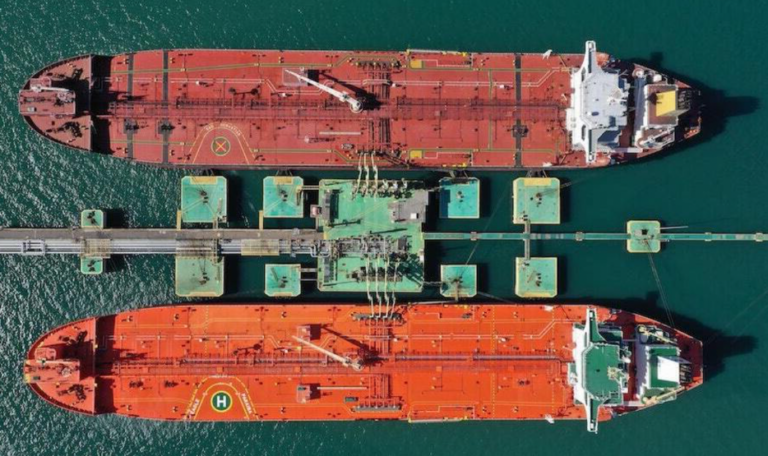Not Always Fuel is the Culprit - Part 1
Companies within the maritime industry are actively seeking ways to optimize their spending, trim trans-fat , and ultimately thrive and achieve success. Fuel expenses are a significant cost driver, constituting a substantial portion of the overall operating budget. The procurement of this costly commodity is executed after meticulous validation. However, in recent times, particularly after the introduction of Very Low Sulphur Fuel Oil (VLSFO), it has become common to blame bunker fuel for any issues encountered by vessels. This prevailing belief is a myth.
On the contrary, reality often diverges from this misconception, and fuel is not always the root cause of problems experienced onboard. Several non-bunker-related issues are frequently misattributed as fuel problems. Some of these non-bunker problems include:
1. Liner problems due to improper feed rate
Furthermore, in addition to the above, when onboard drain analysis tests reveal wear (indicated by high iron content), the common immediate reaction is to increase the liner feed rate. However, this often leads to excessive lubrication, causing heavy calcium deposits. Even after the running-in process post-overhaul, many vessels continue to maintain a high feed rate, again resulting in excessive lubrication.
Moreover, many vessels employ two different cylinder oil grades, stored in separate tanks, to accommodate various sulfur grades when changing from one fuel grade to another. In many cases, it’s overlooked to switch from one cylinder oil grade to another BN cylinder oil, creating complications if left unchecked. As a result, the era of starvation is obsolete, with excess lubrication taking center stage. Contrary to expectations, the issues mentioned above are sometimes mistakenly attributed to problems stemming from bunker fuels.

Liner problems have come to the forefront in the current era. Very Low Sulphur Fuel Oil (VLSFO) is the predominant choice for many ships that lack abatement technology onboard. Vessels opting for VLSFO, owing to its low sulfur content, are employing Low Total Base Number (TBN) cylinder oil, typically around 25 BN. However, some vessels continue to use High TBN cylinder oils, rated at 70 BN or even higher in certain cases. High TBN oils, even with lower feed rates (with the minimum feed rate being maintained at 0.6 g/kW hr, as recommended by MAN when vlsfo is burned), can lead to scuffing due to excess lubrication, resulting in various allied issues. These issues are often mistakenly attributed to fuel-related problems.
2. Problems encountered due to cylinder oil
On the other hand, a few problems caused by lubricants are often mistaken as fuel-related issues. Following the introduction of Very Low Sulphur Fuel Oil (VLSFO), lower Total Base Number (TBN) cylinder oil grades (e.g., 25, 40, and 50 BN) were used. Accumulation of carbon deposits occurred due to the lack of detergency and dispersancy in Cat 1 low BN cylinder oils, leading to scuffing problems. Initially, these issues were thought to be fuel-related, especially for VLSFO. However, a more in-depth analysis revealed that the root cause was the cylinder oil. While low BN cylinder oil can help mitigate by-products of combustion due to low sulfur content, it tends to leave behind heavy carbon deposits.
Intermediate alkaline lubricants tend to form water-in-oil emulsions, leading to issues such as washing away the thin oil film and affecting load-carrying capacity, resulting in significant impacts. Again, these problems are often initially thought to be fuel-related issues.
The prevailing myth attributing any machinery problems, whether small or large, solely to fuel has been debunked by the above-mentioned facts. In the forthcoming series, we will not only discuss liner issues but also shed light on various other commonly overlooked critical facts.

Handling Methodologies
1. Storing
Improper storage can lead to the complete loss of bunkers. Sometimes, due to the unavailability of tanks, fresh distillate bunkers are stored in tanks where residual bunkers had been stored earlier without proper cleaning. This can result in the washout of bottom residues (e.g., cat fines and sludge) clogging the pipelines and fuel system. Furthermore, due to the non-availability of tanks, two bunker batches are sometimes blended without checking for compatibility, leading to sludge formation.
Other common problems while storing include the absence or inappropriate heating. This can occur due to steam coils clogged by condensate, obstructed steam traps, problems with malfunctioning steam regulating valves, or profuse steam coil leakage, among other issues. Problems can also arise due to the failure of circulation pumps, resulting in inadequate circulation, which in turn affects heating. In cases where additives are injected into the tanks, they may not help achieve a homogeneous blend mixture due to the absence of or inadequate circulation.
2. First In, First Out
Another typical problem arises from long storage. In industries with an intensive supply chain (e.g., FMCG companies), the “first in, first out” concept is emphasized. Anything lifted first should be used first. However, due to improper planning fuel that is lifted first is sometimes stored for an extended period before use, leading to prolonged storage and unstable fuels.
On a different note, fuel is not solely responsible for the problems encountered; handling methodologies also play a key role. All types of fuel, as we know, need to be handled appropriately to ensure trouble-free operation. Especially VLSFO fuel, being a blend, needs to be heated within a specific temperature range to prevent rapid oxidation that might lead to excessive sludging and other related problems. Thus, improper storage temperatures, both at the storage point and in the fuel system, can lead to thermal stress and associated issues.
3. Lack of Fuel Treatment
As rightly quoted by Swedish club in an article, A 22400GT bulk carrier with a main engine spec of MAN B&W 5S42MC carrying wood was found to had witnessed severe vibration from purifiers. Purifier seal got damaged which was not changed as spares were not available which led to inappropriate treatment of fuel oil resulting in Main engine damage. Thus, improper fuel treatment and poor stock maintenance resulted in critical and severe damage.
4. Improper Engine Injection Temperatures
Failure to maintain precise engine injection temperatures can contribute to improper combustion and result in associated challenges. This is especially critical for VLSFO fuel, whose viscosity can vary from 6 cSt to 380 cSt (and even as low as 2 cSt). Maintaining the exact engine injection temperature is essential to ensure proper combustion. Fuel quality cannot be solely blamed if the appropriate temperature is not maintained.
As per MAN, ME, ME-C, ME -B Engines tolerate Low fuel viscosity than the MC Engines.
5. Cold Flow Issues (N Paraffins are responsible)
On other hand, at freezing zones if temperatures are not maintained properly will again lead to cold flow problems. N paraffins – long straight chain paraffin molecules form crystalline wax at below certain temperatures will drop out of the fuel. These paraffin wax in the fuel that leads to the cold fuel problems when the temperature drops below certain limits. As we know, maintaining the fuel 15 deg C above their cloud point will enable to avoid cold flow problems. Thus, recommend maintaining temperature above Pour point that will enable to avoid cold flow problems.
N Paraffin molecules are large that will agglomerate in due course. Agglomeration of paraffin wax will lead to clogging of filters. This happens when the temperature falls below cloud point. Thus, appropriate temperature is to be maintained and not allowing the temperature to drop down when the temperature further drops down it will lead to cold plugging of filters (CFPP). All the above occurs, due to the crystallization and agglomeration of the N paraffins in the fuel. VLSFO is prone to the subject problem as it is a blend composition.
In conclusion, debunking the myth that fuel is always the culprit in any vessel machinery problems, this article highlights the complexity of challenges beyond bunker-related problems. From intricacies in lubrication dynamics to the impact of handling methodologies, it is evident that a nuanced understanding is crucial. As we proceed in this series, a comprehensive approach will unravel further critical factors often overlooked in ensuring smooth maritime operations.
GeoServe, under its fuel arm GeoStem supports in preventing and resolving Bunker Quality and Quantity related claims.
We’d like to hear from you!
Contact us today and one of our experienced team
members will connect with you soon.
Stay Connected
Subscribe to our newsletter to get company updates on your mailbox.